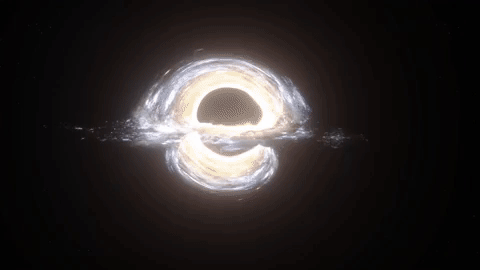Black holes are singularities, points of infinitely small volume with infinite density. Such incredibly compact objects cause infinite curvature in the fabric of spacetime. Everything that falls into a black hole is sucked toward the singularity. At some distance away from the singularity, the escape velocity exceeds the speed of light, which is called “the point of no return,” although the technical term is Schwarzschild radius or event horizon. But what are the sizes of black holes?
There are a couple of different ways to conceptualize how BIG something is. The first is an object’s mass (how much matter it contains) and the second is its volume (how much space it takes up). However, the radius of a black hole’s event horizon is directly dependent on its mass, so in this case, we can answer the question, “How big is a black hole?” solely with respect to mass.
Different types of black holes have very different masses. Stellar-mass black holes are typically in the range of 10 to 100 solar masses, while the supermassive black holes at the centres of galaxies can be millions or billions of solar masses. The supermassive black hole at the centre of the Milky Way, Sagittarius A*, is 4.3 million solar masses. This is the only black hole whose mass has been measured directly by observing the full orbit of a circling star. Black holes grow by accreting surrounding matter and by merging with other black holes.
Because there is such a huge leap in sizes of black holes, between stellar-mass and supermassive black holes, it has been hypothesized that a class of intermediate-mass black holes also exists. The black holes would be hundreds or thousands of solar masses. There are a couple of candidate intermediate-mass black holes, such as HLX-1, which is estimated to be 20,000 solar masses.
Another hypothetical class of black holes is primordial black holes, which would have formed out of density fluctuations in the early universe. Generally, they would have been so tiny (the minimum mass would be the Planck mass) that they can only be properly described using quantum mechanics. But black holes evaporate through a process called Hawking Radiation. How quickly a black hole evaporates depends on its mass: the less massive a black hole, the more quickly it evaporates. For a primordial black hole to have survived to the present day, it would have to contain a few billion tons of mass, with a radius comparable to that of an atomic nucleus.
